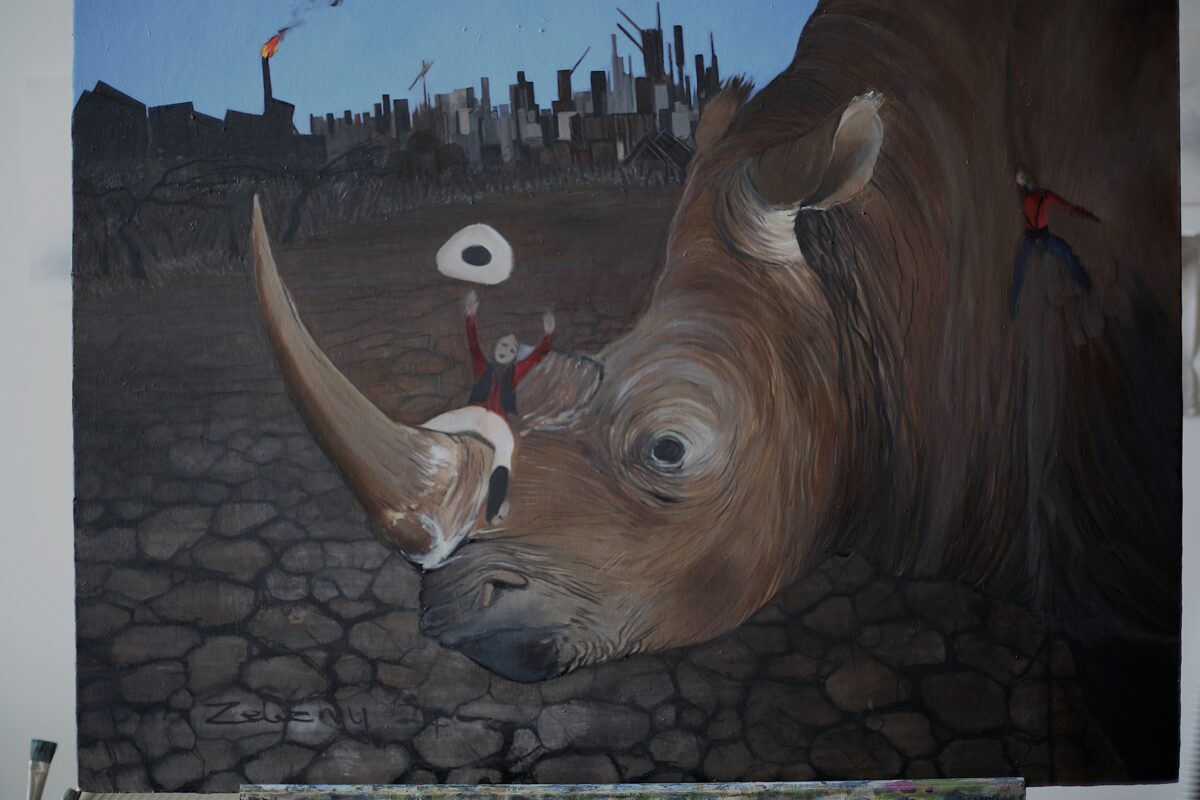
Making Space at the Table
NAP Contemporary’s group show, The Elephant Table, platforms six artists and voices—creating chaos, connection and conversation.




Deborah Hart is a true believer in the power of art to battle climate change. She is the chair of CLIMARTE, founded in 2010 as a “a broad alliance from across the arts, humanities and sciences”, and she has a deep faith in the ability of creativity to change minds, turn eco-despair into action and keep the planet liveable by fighting the fossil-fuel industry.
She certainly has a lot of enthusiastic company: climate-change themed art, or “eco-artivism”, has long been in the ascendancy, but in recent decades has become increasingly visible—sometimes dominant—across a variety of platforms and programs, from small artist-run spaces to big institutions and online offerings.
But is the world-changing intent of eco-art realistic, or is it just more virtue-signalling for artists and galleries under pressure to appear green and clean? And is it reaching its professed audiences—the uninformed and the unmotivated—or just bouncing around an echo-chamber of those who are already green-savvy? Might artists be more effective directing energy into political action: planting trees, campaigning to their local MP, or vigorously lobbying the big fossil fuel companies?
Hart is resolute about the positive impact of CLIMARTE, which advocates for “immediate, effective and creative action to restore a climate capable of sustaining all life”. She says that while the artists she works with through CLIMARTE are already participating in various forms of climate action in their personal lives, they typically become “much more engaged through our projects”.
“We all have to engage in practical emission-reduction strategies as well as political campaigning,” she says. “While we all must do our best, we’re not going to get where we need to until we have a proper reckoning with the fossil-fuel industry—for tethering us to this systemic [problem], for their ongoing deadly investment choices, their lies, deceit etcetera.”
One of the difficulties with gauging whether climate-focussed art translates into real-world impact is a lack of objective, evidence-based assessment, such as that applied to climate science itself—where verifiable facts, statistics and other evidentiary support prove its thesis. As Hart notes, the arts are notoriously flawed at doing this sort of thing and, in any case, conventional measurements “don’t really capture how cultural leaders work”.
Even so, Hart says CLIMARTE is assiduous in collecting metrics for its various engagements, including its three Art + Climate Change Festivals (2015, 2017 and 2019), and the 20-month operation of its gallery in Richmond. While these statistics—clicks, attendance figures and so on—have shown strong engagement, she says the anecdotal evidence is extremely powerful, too. She has many stories of visitors engaging with the CLIMARTE team and having deep and interesting discussions that seem to open their minds.
Hart says that while people’s responses to CLIMARTE works and projects will always vary, occasionally there will be a key person “on the edges of multiple communities” who is “moved to extraordinary action” by CLIMARTE and brings a lot of people with them in the climate fight. Such action is “the greatest antidote to despair” and she finds that people are greatly motivated and moved to action because CLIMARTE’s focus is on “working with great people to create the most powerful work possible with the resources available”.
Art is an excellent tool for combatting climate misinformation, she says, because it is good at holding power to account, and it is adept at truth-telling and getting under people’s guards to create new perspectives. “Even people who don’t like what we are saying necessarily—I can give you many examples—can’t help being delighted or captured by the work, or being really infuriated, and that’s always good for us. We are trying to prompt public conversations and questioning of these issues.”
While the gallery is on pause due to funding issues, CLIMARTE has an array of projects in development including a “liminal space” exhibition that dovetails with a climate emergency plan document being finalised by the City of Yarra. Part of Melbourne Fringe, the project incorporates work by local First Nations artists. Another project is hosting The Scrolls: 3000 days… and counting, a touring climate exhibition by Sharon Field. CLIMARTE is also working on h2o/co2 (working title), a City of Melbourne-funded project exploring “the essence, experience, feelings and relationships” with water, in which artists will be provided with opportunities to collaborate with scientists, water-policy experts and community campaigners to understand the critical roles played by Melbourne’s waterways and infrastructure.
Having recently presented CLIMARTE’s work at a symposium hosted by London’s University of Greenwich, Hart says her organisation is now recognised as a global leader in exploring connections between arts, community, climate and science. “It’s important that the things we are doing and the work we are profiling is accessible but ongoing to inspire and inform the debate. Artists are complex-systems thinkers: experimenting and taking risks is in the realm of what they do. The solutions are there – it’s just the political will and community organising that is key to it. Just a glance at human history shows that even when it gets really tough, people are hard-wired to seek justice and some days it feels not too far on the horizon.”